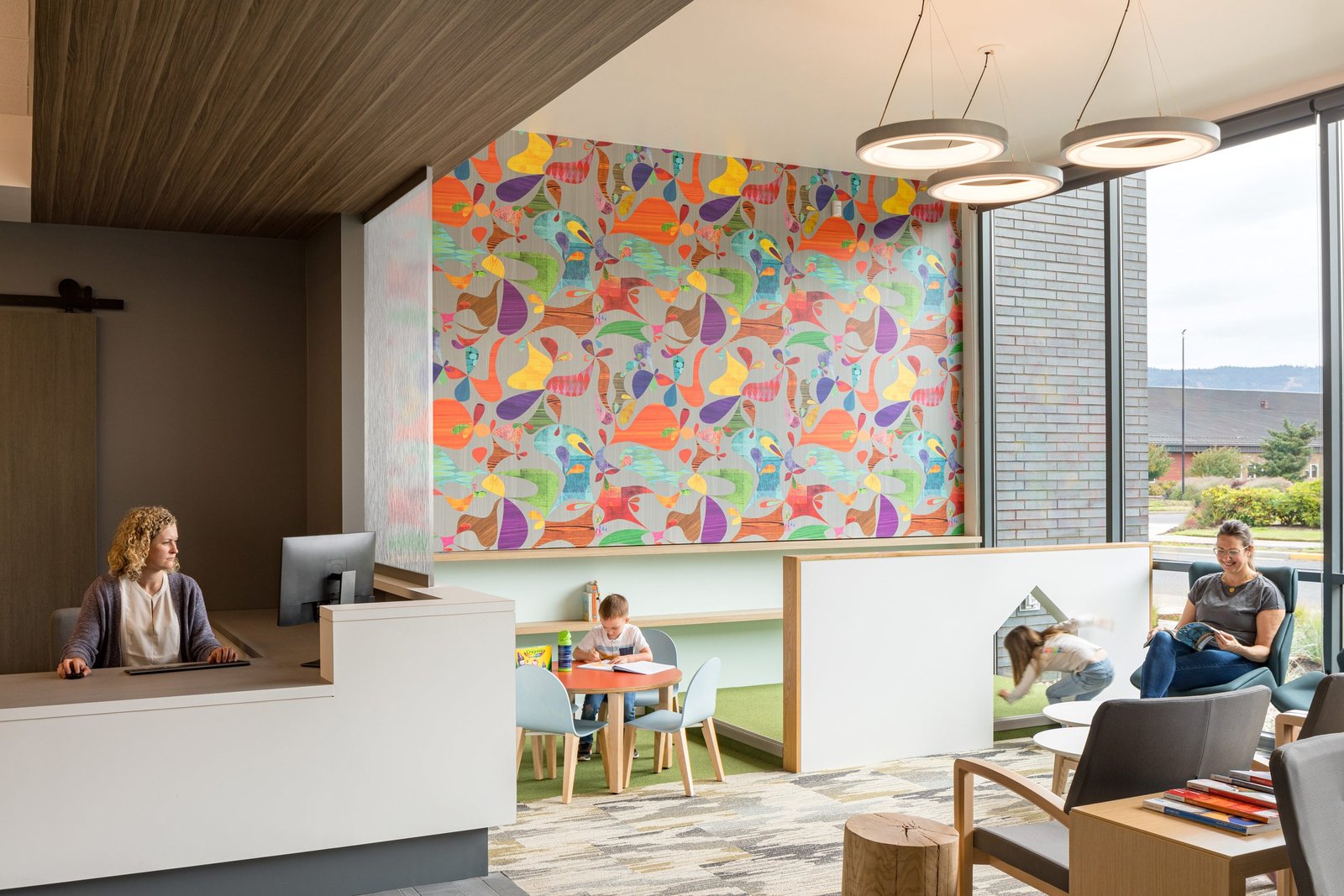Optimizing Patient Experience Through Inclusive Design
The fact that healthcare facilities, such as hospitals, inpatient rehabilitation centers, medical office buildings, and others, serve as sanctuaries for their local communities is widely known. In recent years, there has been a significant change in the way these facilities are designed to provide a sense of security to various patient populations.
Studies conducted by the Academy of Neuroscience for Architecture indicate that an enhanced built environment can improve the patient’s experience. While not a new idea, one approach that can be adopted is universal design. Essentially, universal design is centered on creating an environment that welcomes everyone, regardless of their age, size, or ability level, and provides equal access to the space, with no one being treated as a “special case.”

Universal design is comprised of seven fundamental principles:
- Equitable Use: Does the design allow individuals with a wide range of abilities to use it?
- Flexibility in Use: Does the design accommodate a broad range of individual preferences and abilities?
- Simple and Intuitive Use: Is the design easy to understand, regardless of the user’s knowledge, language skills, experience, or level of concentration?
- Perceptible Information: Does the design communicate the necessary information to the user, regardless of their sensory abilities?
- Tolerance for Error: Have hazards and the negative consequences of accidental or unintended actions been minimized?
- Low Physical Effort: Can the design be used with ease, comfort, and minimal fatigue?
- Appropriate Size and Space: Is the design adequately sized and spaced, and can individuals reach items regardless of their physical mobility or size?
At first glance, these principles may appear to be basic and essential components that should be incorporated into any space. For example, it seems reasonable to assume that hallways and elevator lobbies should be free of objects that could cause someone using a cane to trip, which aligns with the Tolerance for Error principle. However, when designers apply these principles, they aim to cultivate empathy for individuals who frequently feel overlooked in the design of a space. By utilizing empathy to develop an equitable space, designers convey to these individuals that they acknowledge the difficulties they encounter, and they want to help alleviate that burden.
Creating healthcare spaces that cater to everyone’s needs requires research and innovation.

At our firm, we begin every healthcare project by hosting collaborative work sessions with our clients to understand their priorities and requirements, and identify areas where we can optimize efficiency. Where possible, we also conduct post-occupancy evaluations to assess how well the space is meeting the end users’ needs.
Through our Healthcare practice, we have discovered that there are five essential design aspects that everyone requires: feeling safe, being included, the ability to focus, physical and cognitive comfort, and having a sense of control over their situation. Based on our understanding of these needs, we have developed a set of healthcare design drivers that guide our practice. These drivers include patient safety, adaptability/resiliency, operational efficiency, technology integration, the human experience, and sustainability. There are numerous ways that these drivers are reflected in the design of healthcare spaces.
For instance, let’s consider the seating arrangements in waiting areas. Typically, individual chairs are used to separate patients and provide them with a sense of personalized space. However, by adopting the principles of universal design, we can see that it may be better to use alternative seating arrangements, such as double-wide chairs or a love seat, instead of specific bariatric seating, to accommodate people of size. By accommodating the needs of those who are often ignored during the design process, we can create a more inclusive space.
Another excellent example of designing for empathy is creating spaces of respite for clinical staff. Research has shown that nurses require a restorative recovery space to recharge during breaks. When appropriately designed, these spaces can reduce rates of depression, prevent work burnout, and minimize emotional and physical exhaustion. Rather than merely providing tables and chairs, designing a space that feels more like a living room, complete with comfortable lounge furniture, coffee tables, and inspiring artwork, can better support staff. These spaces will also help them feel cared for and acknowledged, which could positively impact their behavior and help them excel at their job.
In conclusion,
Empathy is an essential aspect of design,and including all stakeholders in our design decisions will elevate the quality of design and create a safe space that enhances the human experience for all. By utilizing healthcare design drivers and the principles of universal design, we can help alleviate burdens for various patient populations and ensure that we provide a comfortable experience for all.
Contact us with any questions
contact us
Phone




Hi, this is a comment.
To get started with moderating, editing, and deleting comments, please visit the Comments screen in the dashboard.
Commenter avatars come from Gravatar.
It’s an amazing post for all the web people; they will get advantage from it
I am sure.
Thank you Jean